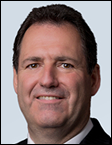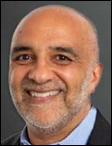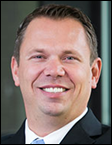HIStalk Interviews Tom Skelton, CEO, Surescripts
Tom Skelton is CEO of Surescripts of Arlington, VA.
Tell me about yourself and the company.
I’ve been in healthcare IT for a long time now. Believe it or not, it has been 40 years. The focus of my career has been digitizing healthcare, predominantly from the perspective of providers. Over time, it moved into different segments.
Surescripts has been around for 20 years now. It was stood up to solve some of the nation’s most significant problems. That was e-prescribing at the time, but we’ve expanded and broadened since then. We have never wavered from our purpose, which is to serve the nation with the single most trusted and capable health information network. Our focus remains patient safety, lower costs, and higher quality care.
How did use of the Surescripts network change with the pandemic?
Our focus has always been on either the prescribing process or informing care decisions and providing information to the caregivers, usually at the point of care. We saw a number of things occurring during COVID. There was a huge change in the telehealth landscape. Lots of new entities were springing up, and even within established entities, large health systems were innovating in the world of telehealth. We saw a much greater use of the network.
The other thing that happened was there was a greater focus on public health type information and the need to inform federal, state, and local agencies what was going on in the world of COVID. Folks repurposed some of our solutions to do that. For example, our clinical direct messaging offering was never intended to do that type of reporting, but that’s what people did with it.
We think that that’s an example of how innovation is going to occur in the world of interoperability. We are all accustomed to certain use cases. We think that the consumers of those use cases are going to make those things valuable in ways that maybe we didn’t anticipate or intend.
What has the company learned in not just allowing healthcare participants to exchange information, but making the external information actionable?
It used to be that establishing a connection was a huge issue. It still takes a lot to do that and get it right, but that’s getting easier and easier. As it does, there’s a greater focus on the quality of the information that is being moved and how it appears in a natural workflow for the consumer of that information. Surescripts and our network alliance are focused on enhancing the quality of that information.
It’s making sure that the standards that exist — and there are many of them – are being implemented in a way that everybody agrees on how to utilize them and how to populate the individual fields or to populate the data elements. So that when it hits the workflow of a physician, pharmacist, or any clinician, it is appearing in a way that they can consume it and use it to enhance the care that that patient is being given. We see a lot of time and energy being put in to that.
Direct messaging seemed like it was going nowhere for a long time. How have you seen the Direct concept as well as your specific Direct platform progressing?
It’s interesting that you make that observation. That solution has been around for a while. It’s one of the few general solutions that exist in the world of interoperability. You are right that when it first came out, because it wasn’t use case space specific, people weren’t sure what to do with it. Over time, they are finding solutions here and finding that it can be an effective way to share information, provided that the sender and the recipient are on the same page in terms of what’s being said. We certainly saw that during COVID.
We are seeing a lot of work with that as we are working with health plans and helping them to do outreach to the physician community. These are the types of solutions that we are bringing to bear to help inform those care decisions that the prescribers, providers, and clinicians are making.
How do you see the information exchange market between providers and life sciences companies evolving?
Those companies have a a significant role to play here. They are major players in what goes on with the patient. They are obviously very interested from their own standpoint about what’s happening with the brands that they are putting out there. They want to know how their products are being used and what the adherence rates are. They want to make sure they are communicating with the prescribers. In many cases, they want to have access to the patient.
They have a great interest in the whole world of interoperability. We see that and understand that need. That’s one of the challenges we will face as interoperability grows. Life sciences wants access. Health plans want access. PBMs want access. One of the challenges for clinicians will be to make sure they are getting the right information without being overwhelmed with information.
How do healthcare networks add value?
An individual network can add value in many places. A lot of networks in healthcare are doing great work, whether it’s in the clinical world like we are, or whether it’s in the administrative world like some of the other folks.
Moving that information and helping to connect the ecosystem is a pretty daunting task. We have two million healthcare professionals. We are sharing actionable intelligence for 320-plus million patients. We are processing over 17.5 billion transactions a year. The role of the network continues to be not only facilitate that connectivity, but to ensure the reliance, the resiliency, the quality, basically the trust between the sender and the recipient and making sure that people that are requesting information are who they say they are and are entitled to that information and really do represent the patient that they’re requesting the information about.
There’s a lot that goes on there to maintain trust across the ecosystem. All of that contributes to how networks add value.
What influence will the Trusted Exchange Framework and Common Agreement have?
There’s a variety of mechanisms that the regulatory bodies are putting out there to help facilitate interoperability, whether it’s increased focus on standards, something like TEFCA, or whether it’s the information blocking legislation that was put through and is out there. All of that has value and helps to move it forward. It’s incumbent upon all of us in healthcare that are moving this information to tell our stories effectively as well.
One of the great challenges in the market is that each of us has an anecdote that we can tell that indicates that interoperability is not perfect. But we’re all moving a lot more information than we ever have, and it’s on us to share that information so that everybody understands how far along in the journey of interoperability we are and how far we’ve come. There’s still a long way to go, but a lot of good progress has been made.
The creation of those networks also creates business value. We’ve seen high levels of health IT investment activity and company valuations, but Surescripts has been quiet in terms of acquisitions or market transactions. Why is that?
We were founded to stand up one of the earliest networks in the market, particularly as it relates to clinical. Our goal here is a bit different than the goals of some of these other folks. We’re not chasing EBITDA. We’re not chasing an exit. That’s not what it’s about.
What it’s about for us is establishing, operating, and innovating on an existing platform that is neutral in the ecosystem, that is designed to facilitate the movement of that clinical information. Our growth has been driven by organic investment and continues to be driven by organic investment. We think that that’s a fabulous way to go. We think it also gives us the ability to take the long view and to make investments that other organizations may not be willing to make, and we think there are advantages there.
Where do you see the company in the next three to five years?
We are looking at what’s going on in the market and seeing many of the same things as everybody else. We’re seeing an increase in chronic conditions. We’re seeing the impact of high-cost specialty drugs. We’re seeing doctors facing ever-increasing rates of burnout. There’s a lot going on around us.
Our focus will be, number one, to sure that we optimize the prescribing process. We’ve got a lot of work to do in the area of specialty. We need to stay focused on that. We need to remove friction. We need to do things that advance and improve adherence and make it easier for all Americans to get the medications that they need.
The second thing for us comes back to that getting information to the provider community at the point that they need it. Solving that need for informing care decisions by giving them the actionable intelligence that they need and continuing broad-based connectivity for clinicians all across the market.
We remain purpose-driven. That’s who we are and we are very comfortable in that world. Our goal is to continue transforming these interactions among clinicians, pharmacists, and patients.
Do you have any final thoughts?
We’ve seen a lot of investments in the market. We’ve seen a huge influx of capital. We think that shows the amount of opportunity that there is here.
We think there’s a tremendous amount of room for innovation. We are excited about that. We see a continued acceleration of the trends that enabled virtual care. We think there’s going to be a lot of innovation to come that will help further information sharing across the healthcare ecosystem. The pandemic accelerated that and we look forward to continuing that over the next three to five years.


















"A valid concern..." Oh please. Everyone picks the software they like and the origin of that software is an afterthought.…